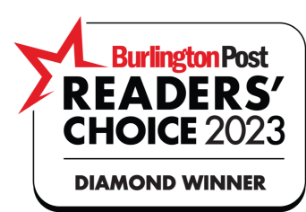Whether you’re a do-it-yourself type of person or hire a professional, interior painting is a great project that can freshen up a room in no time. A couple of fresh coats can create a new theme or mood for any room in your house. While some of your rooms may be easier to paint than others, like those with hardwood or tile floors, rooms with carpeting can be especially challenging. Amateur paint jobs leave tell-tale signs of spilled paint, leaving a messy disaster on the carpet, but you can avoid these mishaps if you plan and prepare ahead of time.

You want to set up everything correctly beforehand because paint drippings on carpet or belongings are the most expensive mistakes of all, according to paint related insurance claims. The best way to safeguard everything in the room is by using a layer of plastic, making sure you tape any overlapping seams together. Padded drop sheets work even better because they are thick enough to absorb any small paint drops until it is wiped up. People are amazed at the angle and speed paint can splash, resulting in some of it landing on your furniture or carpet. These mishaps generally occur from tapping your brush against the inside of the paint can, putting too much paint on the brush or roller and often, just plain sloppiness.
Tips for painting carpeted rooms:
Here are a few tips to help you get your carpeted room ready for painting and avoid the misery of having droplets of paint hit the carpet.
- Measure the room accurately: total square footage including length of each wall or section
- Purchase your supplies: paint, painters tape, drop sheets, flathead screwdriver
- Mask off areas to be painted: the doorways, baseboards or floor molding
If you have a room with wall-to-wall carpeting, you could try to peel that carpet back as you brush along the edge of the baseboard or floor molding, but there’s a better way. Although it’s a bit time consuming, the easiest method for painting the baseboard without any paint droppings on the rug is to use the heavy-duty sticky blue masking tape that is going to adhere to the carpet.
When you lay the tape down, leave about a 1/4-inch running past the carpet with the remainder overlapping onto the baseboard. Now take a putty knife and start working at one end and push the tape down so that the tape is tucked between the carpet and trim. You don’t have to push the tape all the way down to the floor, only enough to make the separation. When it’s dry, just pull the tape up and see a clean paint line between the baseboard and carpet with no marks. Watch the video. Here is another method used by professionals that do not use the masking tape but rather style and technique. Watch the video.
- Cut pieces of the drop cloth to fit the length of each wall: leave about six inches as overlap at the corners
- Use masking tape to secure the drop cloth to the carpet edges: create a barrier of tape and cloth to the wall
- Cover the middle of the room: measure and lay out remaining cloth so carpet is completely covered
- Remove all outlets and switch plates for ease of painting around them
- Apply first coat around the edges of the walls with a 2-inch brush: top, bottom, corners and trims
- Apply remainder of first coat in the large areas: use a roller maintaining an even pressure and overlap the edges of the walls: top, bottom, corners, and trims
- Apply a second coat in the same manner as the first
- Remove the drop clothes and tape: let the room dry for approximately 24 hours
Oops!
Even with the best intentions and following the recommended procedure, you might be horrified to see that some paint has seeped through when you lift up the drop cloths. Stay calm, don’t freak out and try these methods to clean the stain.
If the stain is relatively fresh and not hardened, water is the best solution for cleaning paint off carpeting. Wet the paint spot with warm water mixed with a bit of dish soap and let the mixture sit on the paint to soften and reactivate. Use a clean white rag to dab at the spot. Keep some fresh clean water next to you while you work in the event the initial water becomes discoloured from the paint.
There are other methods that some people recommend, such as using rubbing alcohol, hydrogen peroxide, glycerin, and commercial acrylic paint remover products. Always test these products out on a small, hidden spot first to make sure it’s not going to discolour the carpet.
If these stain removing tactics are not doing the job or you simply want to leave it to the professionals to do it right the first time, contact us and our team of experts will be happy to help you.

